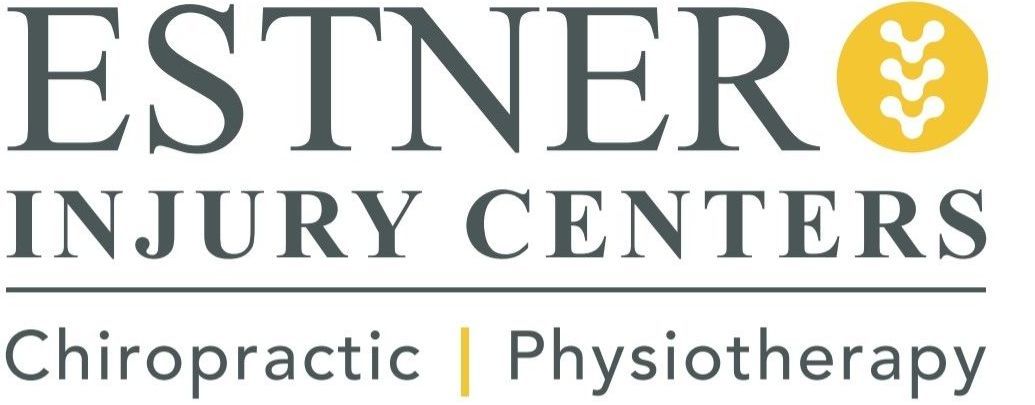What Is Scoliosis & How To Treat It
Share
What Is Scoliosis & How To Treat It
Scoliosis is a back condition that's often misunderstood. This term describes a sideways curvature of the spine. Many associate it with adolescence, but adult scoliosis is also a significant concern. Estner Injury Centers provides expert treatment of adult scoliosis, which includes scoliosis pain relief.
Our spine is an architectural marvel, providing support and flexibility. However, when its natural curve is disrupted, it can lead to complications and discomfort. The columna vertebral, or vertebral column, is vital for our overall well-being. In Rhode Island, Estner Injury Centers remain at the forefront of addressing spinal concerns like scoliosis.
The Spine Has a Natural Curve To It
The human spine isn't perfectly straight. When viewed from the side, it exhibits gentle curvatures, providing balance and absorbing shocks. These curves are present in the cervical, thoracic, and lumbar spine sections. They allow for motion and protect our delicate spinal cord.
However, when observed from behind, our spine should ideally appear straight. Any sideward deviation is not a part of the natural curvature. This deviation can range from mild to severe, with implications for both physical appearance and internal functions.
Scoliosis Is an Abnormal Curvature of the Spine
Scoliosis represents an abnormal, often S-shaped or C-shaped, curvature of the spine. It's not merely a posture issue; the bones rotate, causing a pronounced curve. This type of scoliosis can be present from birth or develop later, often termed adult idiopathic scoliosis. While some cases are mild, others can be debilitating, affecting daily life.
The causa de la escoliosis, or cause of scoliosis, can vary. While some cases are congenital, others arise from conditions like cerebral palsy or muscular dystrophy. There's also degenerative scoliosis, resulting from wear and tear of the spine. Addressing the root cause can aid in effective scoliosis pain management.
Who Gets Scoliosis?
Scoliosis isn't restricted to any particular age group. While many are diagnosed with scoliosis during their adolescent years, adult scoliosis is equally concerning. Genetics can play a role; a family history might increase the risk. The onset can be due to age-related changes or spinal degeneration for adults.
The term "escoliosis idiopática" or idiopathic scoliosis indicates the unknown cause of the condition. Often, this type is discovered during growth spurts in adolescence. In adults, degenerative factors or latent adolescent scoliosis are common causes. Regardless of age, timely intervention is key to managing symptoms and preventing progression.
Scoliosis: Common Symptoms
Scoliosis can be subtle in its initial stages. However, as it progresses, certain signs and symptoms may appear, including:
- Asymmetrical Appearance: One shoulder or hip may appear higher than the other, hinting at a spinal imbalance. Over time, this asymmetry can become more pronounced, affecting posture.
- Uneven Waist: The misalignment of the spine can lead to one side of the waist appearing more elevated or prominent than the other, often noticeable with fitted clothing.
- Ribs Protrusion: In pronounced cases, one side of the ribs can protrude more than the other, especially when bending forward.
- Leg Pain: Though not exclusive to scoliosis, leg pain can arise due to pressure on the nerves or uneven weight distribution.
- Fatigue: People with scoliosis might experience fatigue, especially in the spine, after standing or sitting for prolonged periods.
Early detection can make a significant difference. If you or someone you know exhibits these signs, it's essential to get assessed by professionals. This ensures an accurate diagnosis and timely intervention.
Severe Scoliosis Can Cause GI and Breathing Issues
When scoliosis progresses unchecked, it doesn't just impact the spine. Severe spinal curvatures can press against the chest, limiting lung capacity. Breathing becomes laborious, and lung function diminishes. The twisted spine can also press against the digestive tract, leading to gastrointestinal issues.
Apart from the physical symptoms, severe scoliosis can take a toll emotionally. The pronounced curve can affect one's self-image and confidence. As a result, timely scoliosis treatment in adults is not just about pain management but also about enhancing quality of life.
How Is Scoliosis Diagnosed?
Spotting scoliosis isn't always straightforward. Often, it's during routine physical examinations or check-ups that a potential curvature is flagged. If a professional suspects scoliosis, they'll likely recommend a series of X-rays. This imaging provides a clear view of the spine, highlighting any deviations.
While X-rays are common, other imaging tests, like MRI or CT scans, might be needed, especially if there's concern about spinal cord involvement. These images confirm a diagnosis and help classify the type of scoliosis and its severity. The more detailed the diagnosis, the more tailored the treatment plan can be.
A Chiropractor Offers Adult Scoliosis Treatment
While severe cases might require surgical interventions like spinal fusion, many scoliosis cases benefit from chiropractic care. Chiropractic approaches focus on non-invasive techniques to alleviate pain, improve posture, and enhance overall spinal health. There are plenty of ways we can help you recover.
Adjustments To Improve Spinal Alignment
Chiropractic adjustments are hands-on techniques to realign the spine. By applying controlled force to specific parts of the spine, chiropractors can reduce scoliosis pain and improve spinal biomechanics. These adjustments can relieve pressure on the nerves, often offering instant relief.
Ongoing adjustments can make a significant difference in managing scoliosis pain. Over time, they can enhance the spine's mobility and even halt the progression of the curvature in some cases. It's a holistic approach that factors the entire spine, not just the curve.
Exercises and Stretches To Improve Mobility
Physical therapy plays a vital role in scoliosis pain management. Tailored exercises and stretches can strengthen the back muscles, offering better support to the spine. With consistent therapy, one can improve flexibility, reduce stiffness, and manage pain better.
Specific exercises focus on postural training and spinal alignment for people with scoliosis. With guidance from experienced therapists at Estner Injury Centers, patients can incorporate these exercises into their daily routine, ensuring long-term benefits.
A Back Brace To Improve Posture
In some cases, wearing a back brace can help. A brace can prevent further curvature, especially for those diagnosed with scoliosis during growth spurts. It can offer support, improve posture, and alleviate pain for adults.
The idea behind bracing is to realign the spine and reduce the pressure on the vertebral discs. By doing so, it alleviates pain and discomfort. Getting a brace tailored to your needs and anatomy is essential, ensuring maximum efficacy.
Non-Invasive Acute and Chronic Pain Relief
Scoliosis can lead to both acute and chronic back pain. Chiropractic care focuses on non-invasive techniques that relieve pain without taking medication. Whether it's through spinal adjustments, cold laser therapy, or anti-inflammatory treatments, the goal is holistic well-being.
The spine is more than just a stack of bones; it's central to our overall health. One can manage scoliosis pain and lead a comfortable, active life with the right approach. A combination of therapies can provide the relief many seek.
Preventative Measures To Reduce Injury Risk
Scoliosis can make the spine more susceptible to injuries. It's crucial to adopt preventative measures. Regular check-ups, maintaining a healthy weight, and avoiding activities that strain the back can make a difference. Being proactive safeguards the spine and reduces the risk of exacerbating the curvature.
Educating oneself about scoliosis and its implications is equally important. By understanding the condition, patients can make informed choices about their health. At Estner Injury Centers, we believe in empowering our patients, ensuring they're active participants in their healing journey.
Call Estner Injury Centers for Back Pain and Scoliosis Treatment
Living with scoliosis doesn't mean resigning to a life of pain and discomfort. With the right care, many can lead fulfilling, active lives. At Estner Injury Centers, our team of professionals is dedicated to offering the best scoliosis treatment in adults.
Whether you've recently been diagnosed with scoliosis or have been managing it for years, we're here to help. Our comprehensive approach ensures personalized care, tailored to your unique needs. Reach out to us today to schedule an appointment.

